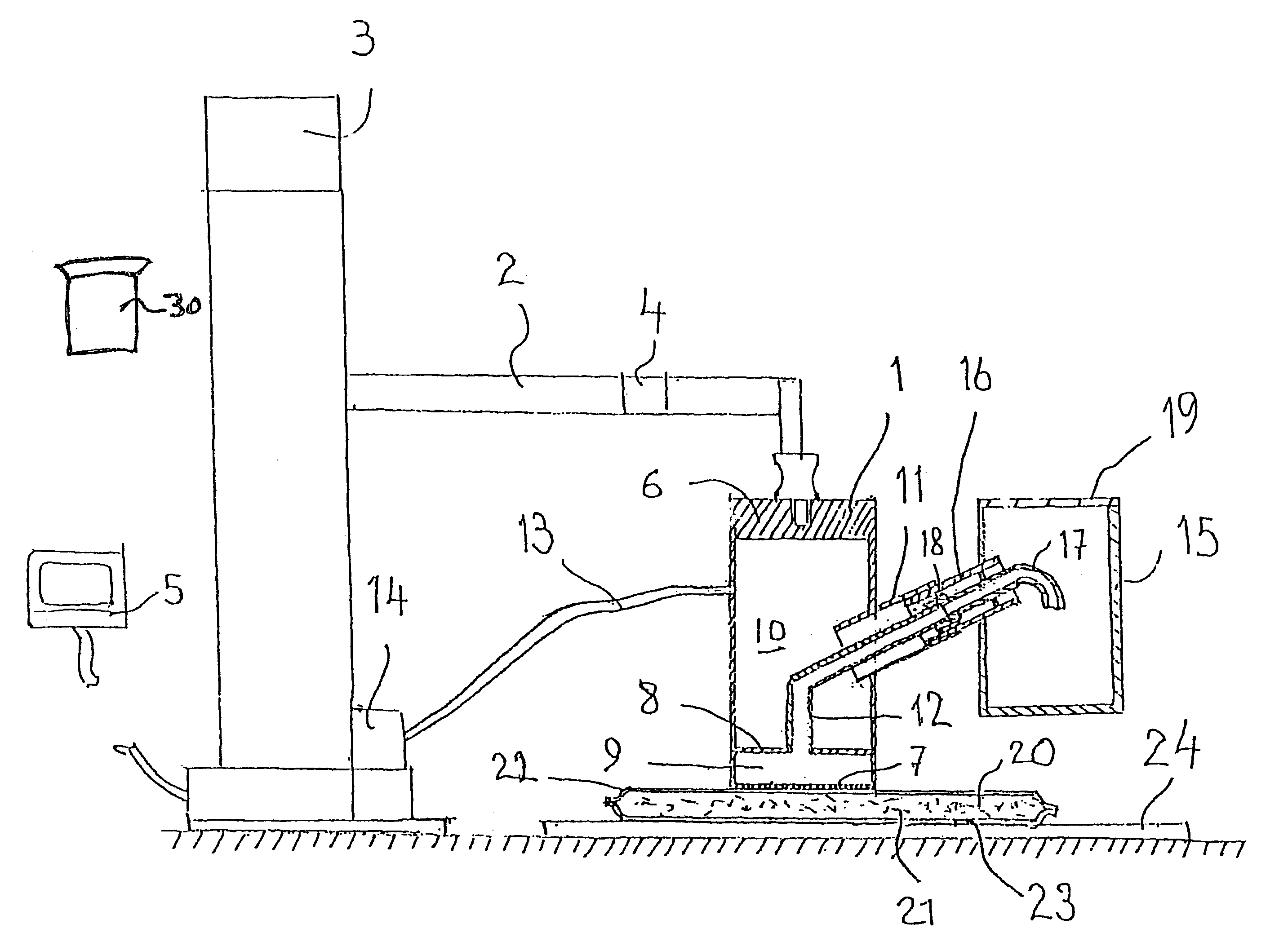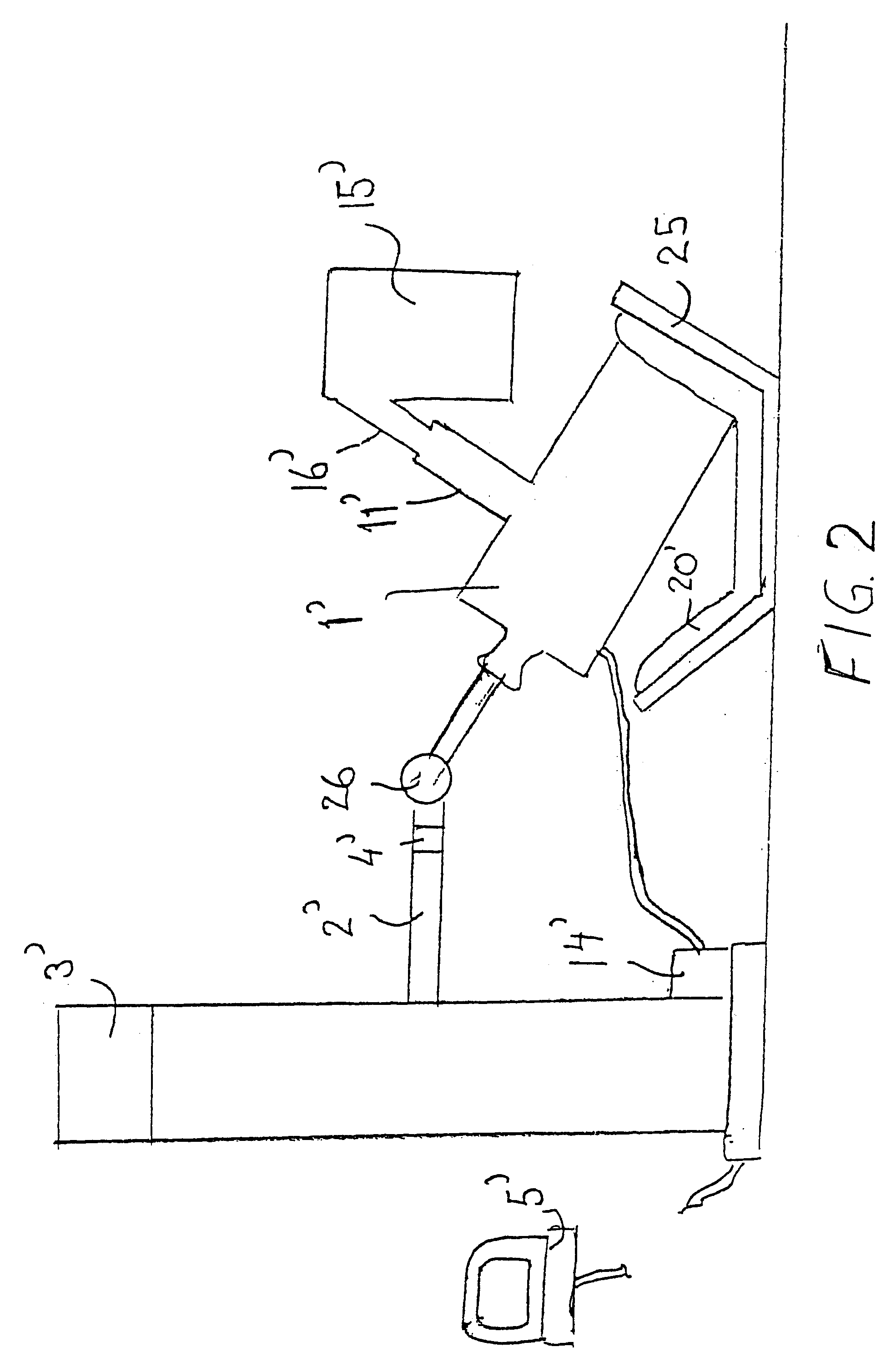Method and a device for determining the liquid retention of absorbent articles
a liquid retention and absorbent article technology, applied in the direction of force/torque/work measurement apparatus, instruments, packaging goods, etc., can solve the problems of insufficient reproducibility or certainty of retention measurement values obtained with these known processes, and the size of capillaries in filter paper may vary
- Summary
- Abstract
- Description
- Claims
- Application Information
AI Technical Summary
Benefits of technology
Problems solved by technology
Method used
Image
Examples
second embodiment
FIG. 2 is a schematic illustration of retention measuring apparatus. The sole differences between the apparatus shown in FIG. 2 and the apparatus shown in FIG. 1 are, in principle, that the article 20' is placed on a plate 25 whose front and rear portions are upwardly inclined and that the pressure body 1 is connected to the arm 2' by means of an adjustable pivot 26. Those components of the apparatus shown in FIG. 2 that find correspondence in the components of the apparatus shown in FIG. 1 have been given the same reference signs as those used in FIG. 1 but with the addition of a prime. Such an apparatus enables retention to be measured with articles whose front and rear portions are in the same positions as those that are normal when the article is worn by a user. In this case, the computer is programmed to calculate and control the pressure component that is directed along the longitudinal axis of the pressure body. The apparatus shown in FIG. 2 may, of course, also be used to me...
example
The liquid retention of two mutually different mild incontinence napkins A and B was measured in accordance with a known method and in accordance with the method described above.
In the case of the known method, the products A and B were weighed and the weights recorded. The products were then placed on a flat surface, whereafter 50 ml synthetic urine were applied to the wetting points of the two products A and B and the products then allowed to rest for 10 minutes, to enable the liquid to penetrate into the products. A filter paper, Munktell 1003, having a diameter of 55 mm was then placed above the wetting point of respective products. The filter papers had been weighed and their weights recorded prior to being placed on the products. A weight of 1800 g having a diameter of 55 mm was then placed on respective products, meaning that the products were loaded with about 7.9 kPa. The weights were removed after one minute, and the filter papers then weighed.
The conventional measuring pr...
PUM
| Property | Measurement | Unit |
|---|---|---|
| diameter | aaaaa | aaaaa |
| weight | aaaaa | aaaaa |
| pressure | aaaaa | aaaaa |
Abstract
Description
Claims
Application Information
 Login to View More
Login to View More - R&D
- Intellectual Property
- Life Sciences
- Materials
- Tech Scout
- Unparalleled Data Quality
- Higher Quality Content
- 60% Fewer Hallucinations
Browse by: Latest US Patents, China's latest patents, Technical Efficacy Thesaurus, Application Domain, Technology Topic, Popular Technical Reports.
© 2025 PatSnap. All rights reserved.Legal|Privacy policy|Modern Slavery Act Transparency Statement|Sitemap|About US| Contact US: help@patsnap.com



